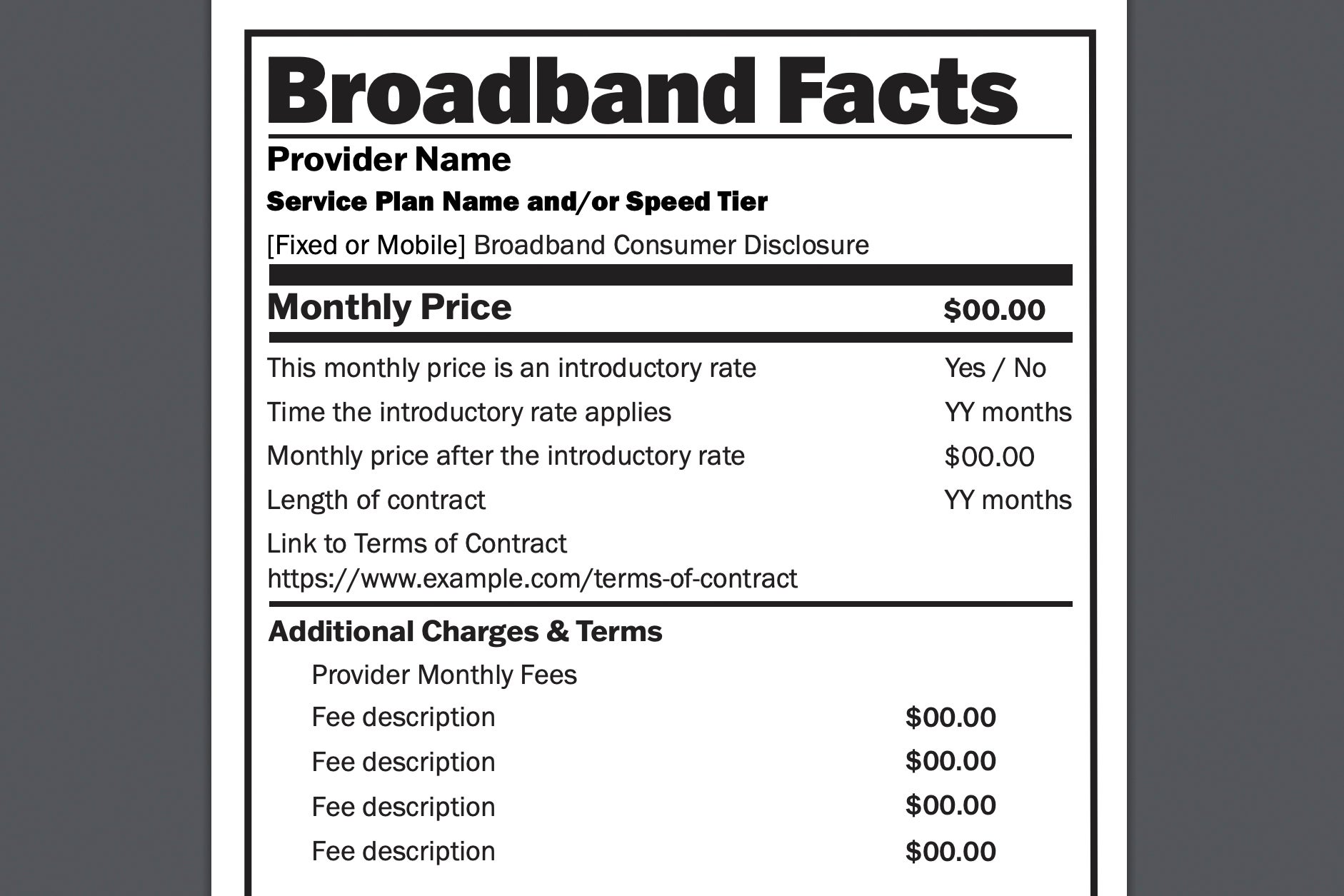Internet providers must now be more transparent about fees, pricing, FCC says
Internet service providers will be required to be more transparent about the cost and performance of their internet service packages, thanks to new FCC rules that take effect this week

Your support helps us to tell the story
From reproductive rights to climate change to Big Tech, The Independent is on the ground when the story is developing. Whether it's investigating the financials of Elon Musk's pro-Trump PAC or producing our latest documentary, 'The A Word', which shines a light on the American women fighting for reproductive rights, we know how important it is to parse out the facts from the messaging.
At such a critical moment in US history, we need reporters on the ground. Your donation allows us to keep sending journalists to speak to both sides of the story.
The Independent is trusted by Americans across the entire political spectrum. And unlike many other quality news outlets, we choose not to lock Americans out of our reporting and analysis with paywalls. We believe quality journalism should be available to everyone, paid for by those who can afford it.
Your support makes all the difference.Much like nutritional labels on food products, “broadband labels” for internet packages will soon tell you just what is going into the pricing of your service, thanks to new rules adopted by the Federal Communications Commission this week.
“If you’ve ever shopped for home or mobile internet, you can understand how hard it can be to understand what you’re actually paying for,” said Jon Donenberg, Deputy Director of the White House National Economic Council, on a call with reporters. "The broadband nutrition label is a tool that can help consumers make sure they have a clear, straightforward explanation of home and mobile services before signing up for anything.”
Following the design of FDA food labels, these broadband labels will provide easy-to-understand, accurate information about the cost and performance of high-speed internet service to help consumers avoid junk fees, price hikes, and other unexpected costs.
Internet service providers selling home access or mobile broadband plans will be required to have a label for each plan beginning April 10.
The labels will be mandated to appear at any point of sale, including online and in stores, and they will be required to disclose all pricing information — including introductory rates, data allowances, and speeds. The labels will also include links to information about network management practices and privacy policies.
Here's what you need to know.
WHAT'S BEHIND THE NEW LABELING?
Hidden fees and unexpected rate hikes have dogged consumers shopping for internet service for years, and the Biden administration has been cracking down on “junk fees” (opaque and misleading fee structures) across industries — including banking, hotel and airline pricing, and utility and phone services — for the past several years.
On a call Tuesday, a spokesperson for the FCC clarified that the labels “cannot be buried in multiple clicks” or hidden in a way that a consumer might miss.
“Fees can make it hard to understand the true cost of an internet plan," said Donenberg, adding that the agency is “committed to rooting out surprise junk fees that some companies pile on to your bills.”
WHAT INFORMATION WILL EACH LABEL CONTAIN?
1. Monthly price and contract length
2. Whether that price will change after a certain period and what it will change to
3. Complete list of monthly and one-time fees, and early termination fee
4. Whether the company participates in the Affordable Connectivity Program and link to check if one qualifies
5. “Typical” download and upload speeds, and latency
6. Data cap and price beyond that cap
7. Links to network management (e.g., zero rating and content blocking) and privacy policies
WHAT IF I DON’T UNDERSTAND SOMETHING ON THE LABELS?
A glossary is available to help consumers better understand the information displayed on the label.
WHAT IF A PROVIDER DOESN’T DISPLAY THE LABEL?
If a provider does not display their labels or posts inaccurate information about its fees or service plans, consumers can file a complaint with the FCC Consumer Complaint Center.
WHEN DO THESE RULES TAKE EFFECT?
While many providers will begin displaying their labels in April, some firms with less than 100,000 subscribers will have until Oct. 10, 2024, to comply with the FCC rules.
“The Associated Press receives support from Charles Schwab Foundation for educational and explanatory reporting to improve financial literacy. The independent foundation is separate from Charles Schwab and Co. Inc. The AP is solely responsible for its journalism.”